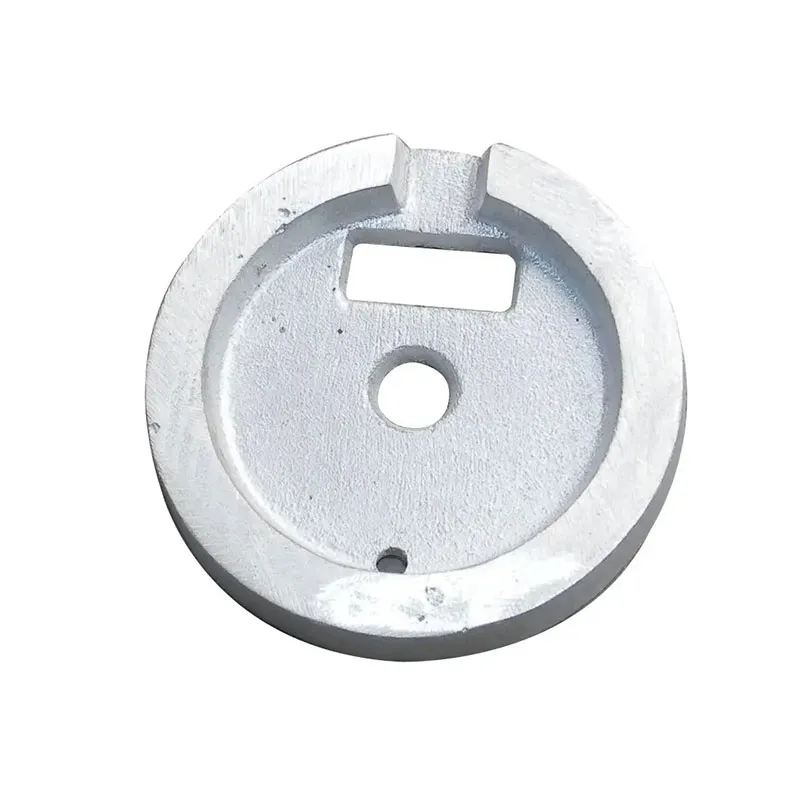ductile iron sand casting
Ductile Iron Sand Casting An Overview
Ductile iron, also known as nodular cast iron, is a versatile material prized for its impressive strength, ductility, and toughness. Its excellent mechanical properties make it a popular choice in various applications, including automotive, agricultural, and construction industries. One of the most common methods for producing ductile iron parts is through sand casting, a traditional yet highly effective casting technique. This article explores the characteristics, benefits, and processes involved in ductile iron sand casting.
Characteristics of Ductile Iron
Ductile iron is characterized by its unique microstructure, which consists of spheroidal graphite nodules. This structure is achieved through the addition of small amounts of magnesium during the molten iron phase. The presence of these graphitic nodules enhances the iron's ability to withstand stress and deformation, making it significantly tougher and more ductile compared to gray cast iron. Typical mechanical properties of ductile iron include high tensile strength, yield strength, and elongation percentages, making it suitable for demanding applications.
Advantages of Sand Casting with Ductile Iron
Sand casting is a widely used manufacturing process due to its flexibility and cost-effectiveness. The primary advantages of using sand casting for ductile iron components include
1. Complex Shapes Sand casting allows for the creation of intricate designs and complex geometries that can be challenging or impossible to achieve with other methods. The versatility of sand molds makes it an ideal choice for custom or one-off parts.
2. Cost-Effectiveness The materials used in sand casting, such as sand and clay, are relatively inexpensive, making this method a cost-efficient option for both low and high production volumes. Additionally, the mold can often be reused, reducing overall production costs.
3. Large Casting Sizes Sand casting can accommodate large-scale components, which is essential for industries such as construction and automotive, where substantial parts are frequently needed.
4. Material Properties The combination of ductile iron with sand casting produces components with excellent mechanical properties. The slow cooling rate associated with sand molds allows for the formation of the desirable microstructure that enhances ductility and strength.
ductile iron sand casting

The Sand Casting Process
The sand casting process involves several key steps
1. Pattern Creation A pattern of the part to be cast is created, typically from wood, metal, or plastic. This pattern will be used to form the sand mold.
2. Mold Making The pattern is placed in a mixture of sand and a binding agent, forming a mold that replicates the shape of the pattern. The sand is packed tightly around the pattern before it is removed, creating a hollow cavity.
3. Pouring Molten Iron Once the mold is prepared and any necessary cores are added, the molten ductile iron is poured into the cavity. The pouring temperature for ductile iron is usually between 1350°C and 1450°C (2462°F - 2642°F).
4. Cooling and Solidification As the molten iron cools, it solidifies into the desired shape. The cooling time can vary depending on the size and thickness of the casting.
5. Finishing After the casting has cooled and solidified, it is removed from the mold. Then, any necessary finishing processes, such as cleaning, machining, or surface treatment, are conducted to achieve the final specifications.
Conclusion
Ductile iron sand casting is an effective method for producing high-strength, ductile components across various industries. Its ability to create complex shapes and accommodate large sizes, combined with cost-effectiveness, makes it an attractive option for manufacturers. As demand for durable and high-performance materials continues to grow, the relevance of ductile iron sand casting in modern engineering remains invaluable. Whether for industrial machinery, automotive parts, or heavy equipment, ductile iron casting is poised to play a critical role in future innovations.
-
Technocrats Die Casting Solutions – Precision Hot & Cold Chamber Die Casting ExpertsNewsJun.24,2025
-
Precision Glass Machining Solutions Sand Casting Glass & Abrasive Water Jet Machining ExpertsNewsJun.24,2025
-
Top Extras Casting Solutions Die Casting and Sand Casting Experts High-Quality Casting and Die Casting ServicesNewsJun.10,2025
-
Top SS Casting Manufacturer Aluminum Die Casting Manufacturer China Precision Die Casting Company SupplierNewsJun.10,2025
-
High-Quality Brass Casting Sand for Precision Sand Casting Brass at HomeNewsJun.10,2025
-
Affordable Aluminum Sand Casting Solutions Custom PartsNewsJun.09,2025















